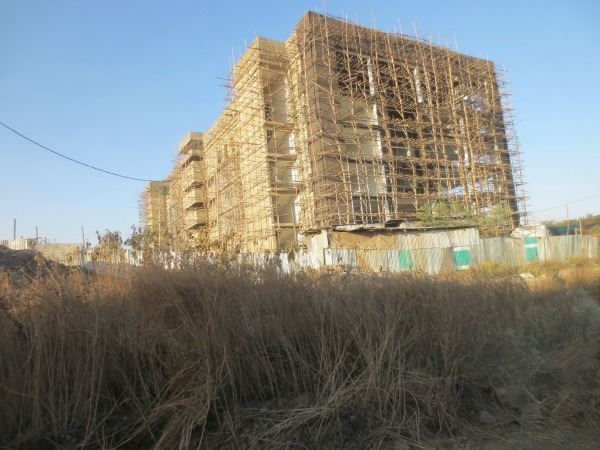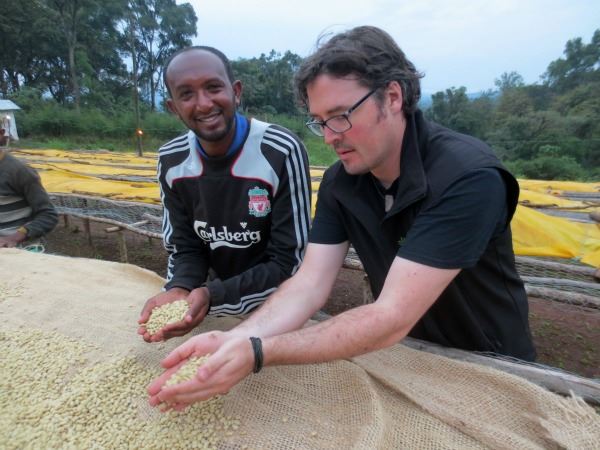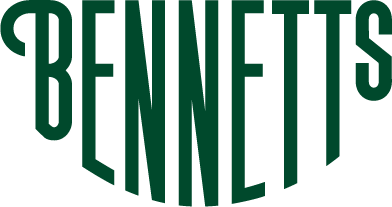Origin Trip Report: Ethiopia December 2015
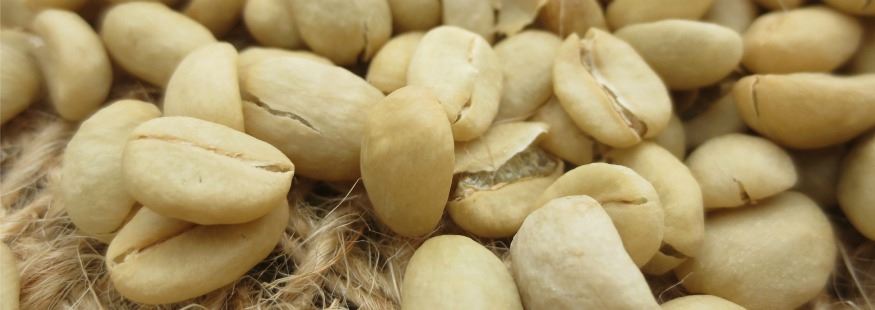
A trip to Ethiopia is high on any coffee aficionado’s bucket list and as a first trip to origin (my apologies to Far North Queensland) there is no better.
We arrived straight into a cupping session in Addis Ababa with our good friends Teddy and Bire from BNT. Generally, cupping quality was very good, although the coffee was extremely fresh. We noted higher scores and more concentrated and intense flavours in comparison to the same coffees last season. This would prove consistent throughout many cupping sessions to come. From Sidamo to Yirgacheffe, and Djimmah through Kaffa, and on to Bench Maji, the cups were consistently of a noticeably high quality. We look forward to re-cupping and putting the samples through their paces back at Bennetts HQ under our quality team’s meticulous and watchful eye.
After cupping with Teddy and Bire, we travelled to the famous Oromia Coffee Farmers’ Co-operative Union (OCFCU) where Dagne, the head of the OCFCU quality department, took us through another excellent flight, comparing new season coffees to those from last year, before driving us to Sidamo to visit several plantations and washing stations, including Kilenso Mokanisa, which is a firm favourite on the Bennetts stock list.

We visited several washing stations during our visit. They all operated in basically the same way. Notable differences between the various stations included the relative cleanliness of washing tanks and flumes, availability and access to clean water, and waste water management. Cherry is delivered to the pulping machine at the station in the evening (growers tend to pick cherry in the late afternoon to avoid fermenting the beans early) where the skin is removed and the seeds are washed into fermentation tanks. At this stage some early quality sorting is done through density separation. The cherries are pulped using a mechanical pulper that divides the beans into three grades by density. The most dense and heavy beans form the top grade and are washed into an alternate tank, separate from the second grade. The third grade ‘floaters’, which are generally only used for domestic consumption, are sent to a third tank. The coffee stays in the fermentation tanks for between 24 and 36 hours, depending on the weather, until the mucilage has all but dissolved. The coffee is then thoroughly washed by teams of rake-toting farm workers who agitate the coffee while pushing it through flumes.

The coffee is sent to holding tanks before being set out on the drying beds for up to two weeks with constant rotation by hand until being removed to storage sheds to rest until milling and preparation for export.

Natural
coffees are generally dried in small amounts on private drying tables dotted
around the towns at people’s houses. They are then hulled centrally at the
co-ops for export.
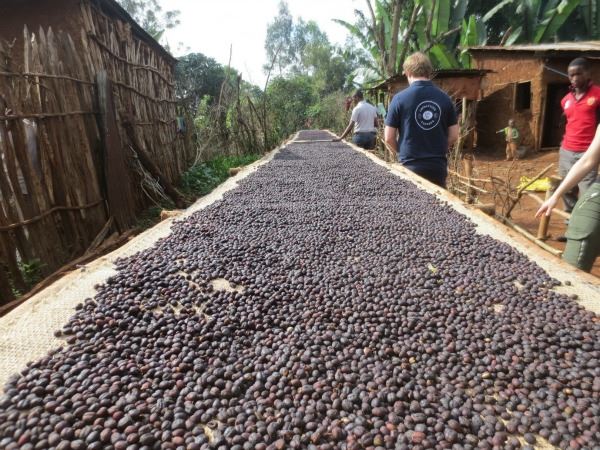
Kilenso Mokanisa is the ideal first washing station to visit and, for me, will forever be the benchmark. As Bennetts have been buying coffee from Kilenso Mokanisa for some time now, I am pleased to say the washing station was extremely clean and very well managed, with beautiful views into the hills around Sidamo. Kilenso draws cherry from around 2250 individual farmers and has the capacity to dry over 400 tonnes of parchment per season, while growing 80,000 seedlings for re-distribution to farmers as well as sugar cane as a supplementary crop (delicious by the way.) We also visited the Homa Co-op which is a great example of the Fairtrade system at work. It costs quite a lot of money for the farmers to join the Co-op, however the payoff is evident in the infrastructure and crop management advice that is made available to them, as well as being granted access to a local school and health centre that were both funded by Fairtrade.
We also visited some of the farms who supply the co-ops, such as a 2 hectare plot owned by Moroma, situated at 1840 MASL. Much of the coffee here, and throughout the region, is naturally shade grown, being sheltered by ‘false banana’ trees which are an integral part of the local diet. Moroma told us that the co-op provides training in agronomy and finance among other things, as well as providing the processing equipment and seedlings. Co-op members also have the opportunity to work together in a rotation system to help get all the harvesting done.
Even though Yirgacheffe is within the Sidamo province, it has its own distinct and much sought after flavour profile. As such there is a premium paid for cherry from Yirgacheffe. During our visit Sidamo cherry was being bought by washing stations at 8 Ethiopian Birr per kilo. In comparison, Yirgacheffe cherry was being bought at 14 Birr per kilo. It is important to note that this does not necessarily reflect quality. As a result there is a strong temptation for farmers to smuggle their cherry into Yirgacheffe. Federal police, often armed with Kalashnikov’s, keep these borders secure.
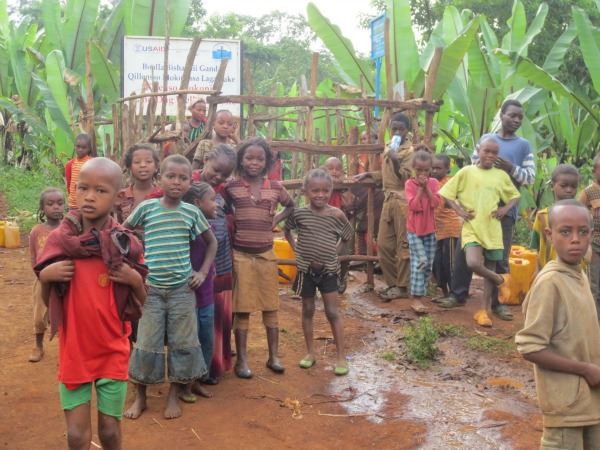
We spent our 8th day driving out to visit the rather comprehensively named ‘Bench Maji Forest Coffee Producer Farmers’ Co-operative Union’ aka the BMFCPFCU (!!!) in the Southern Nations, Nationalities and People’s Region. Bench Maji Zone is in the South West corner of Ethiopia, at the border with South Sudan.
If you are a coffee person, there is probably no more interesting place on earth than the forests of Bench Maji, where wild coffee grows that is genetically related to the world’s first ever coffee trees. Bench Maji Zone also has some of the best roads in Ethiopia, including through the forests of Kaffa, which can be a significant factor relating to the success of a coffee growing area. Stay tuned for some exciting coffee from this region, we’re tipping it will rival Yirgacheffe in the coming years.
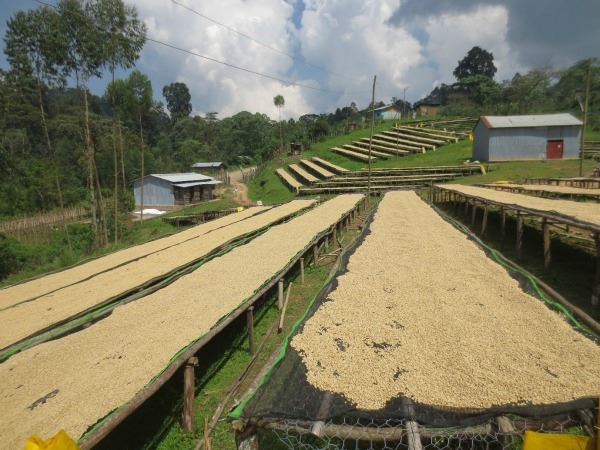
There are three ways to bring coffee out of Ethiopia. The first is through the Ethiopian Commodity Exchange (ECX). The second is through Farmers’ Co-operative Unions, and the third is through privately owned estates who hold their own export licence.
The ECX is a system of buying and selling commodities which was established in 2008 to "protect the rights and benefits of sellers, buyers, intermediaries, and the general public". A seller will deliver their coffee to an official ECX warehouse where it will be graded by official ECX quality assessors and stored. That lot then goes into the pool of coffee to be sold. The seller is then no longer in charge of that lot of coffee but sells the rights to an amount of coffee of the agreed quality.
The problem for importers such as ourselves in using this system is the lack of traceability. There is no way to know where your coffee came from outside of the official designation. For example; for a Yirgacheffe grade 2 washed coffee, one farmer may deliver a fantastic lot of coffee to the warehouse in Dilla and another may deliver an average lot. We have no (legal) way of purchasing that fantastic lot of coffee. There have been attempts to incorporate traceability into the ECX system however at this stage it seems as if it will only be possible to source provenance information after you have purchased a lot of coffee. Whilst this information will be useful after the fact, it only exacerbates the already impossible task of consistently buying coffee from a specific farm through the ECX.
Finally, an interesting feature of the trip was the huge amount of Eucalyptus trees to be seen in Ethiopia. They are everywhere – being used as firewood, scaffolding, telephone poles and fence posts – however these trees, imported from Australia in the late 1800s, are causing an ecological disaster in the country. Eucalyptus are notoriously thirsty and the fast-growing trees are quickly draining the origin’s scarce water supply.
